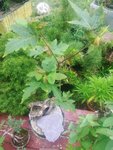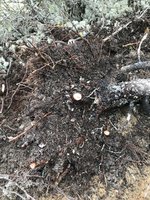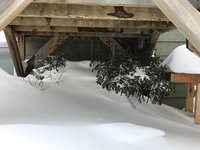Like a beach towel in a capsule, or a sponge dinosaur, a straw paper worm, highly compressed Coco fibers, a hot milk jug, sweatpants on Thanksgiving, baking soda and ketchup, Pepsi and twizzlers, macafrickinroni!
All these were potted successfully the last full moon. I recently read here, the day before or after the full moon is best, so these were done the day after and following weekish. They all have threads.
Before, I would pot, also successfully but only evergreens, just before the full moon, or during the Waning moon.
View attachment 320265
View attachment 320266
View attachment 320267
View attachment 320268
People dismiss it left and right, which is funny, because it's not like God, one can actually go out and look at the roots growing, then brown up, be it outside of a basket, or under a pot, every new moon.
It only took me about one season to be convinced, so it shouldn't take long.
We musta hit 90F everyday till about yesterday since these were potted.
We should consider soil temps over air temps, as the trees do.
They are saying it's too hot to Repot down south during the Summer, I really don't buy it. Unless in an oven like Fresno, where a full shutdown is reported in summer.
One moon before that, and the one directly after, or last during, should prove fine to Repot.
I have been pondering the difference between a tropical root and a temperate Root. Why we would say tropicals like repotted in full growth mode, In summer, but not others. It makes no sense. I feel a "fear of the people" because of what is regularly taught.
If you have been watching the Peter Warren videos, he believes in this thing as I do, of 2%. He speaks of biologics in the soil, but this moon potting, is the same, merely 2% of a whole program. You can get away with it at other times, but, as I recently typed before, this is like spinning a spinning quarter, you flick it and it keeps spinning, if you miss you still have a spendable quarter.
Unless the tree is sickly. Emergency repots should ALWAYS be done by the moon.
We have a large database here, it would only take a handful of us to go back, look at pictures details for dates, check the moon phase, and jot some notes.
I bet most "didn't skip a beats" were good by the moon.
Bet most failed repots were against it.
Perhaps the only key to summer repotting is the moon. Unsure.
For what it's worth, this purple smoke tree and maple pushed new top growth through the waxing moon, as per the pattern.
Since I defoliated and chopped back the elm, it went bonkers right after and thru till a recent dry spell.
I guess there is not really an expansion beyond, it works, and try it out!
Sorce























